When people think about destinations in Spain, sunny beaches and the blue Mediterranean Sea is the image they tend to see. While that’s true, Spain is a large country where all regions have their own history and their unique culture developed during thousands of years. The province of Extremadura in central Spain – between Madrid, Andalucia, and Portugal – has practically been hidden from the outside world. Spanish tourists are well aware of the treasures of the region, but foreign travelers haven’t discovered it yet. Four ancient towns Badajoz, Caceres, Merida and Trujillo have so much to offer for visitors that it is about time to introduce them to everyone.
Badajoz
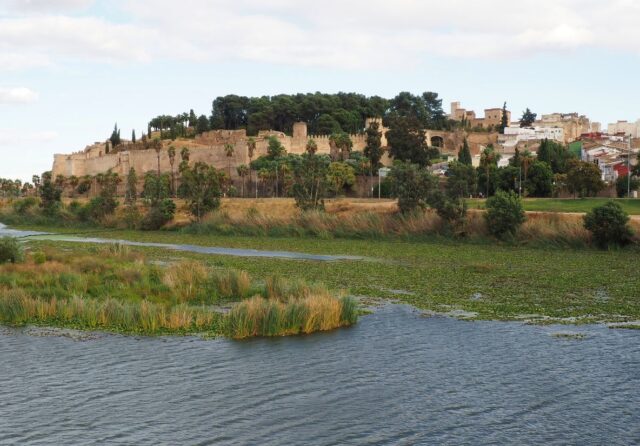
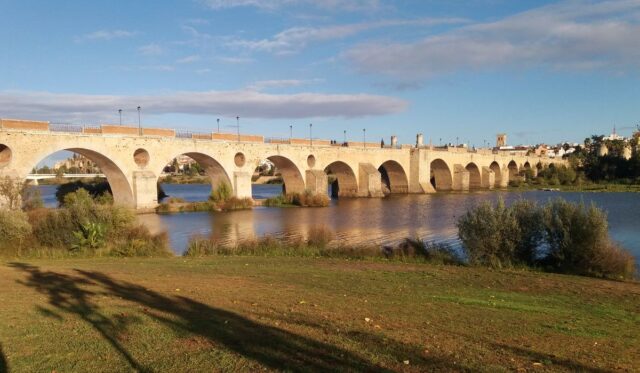
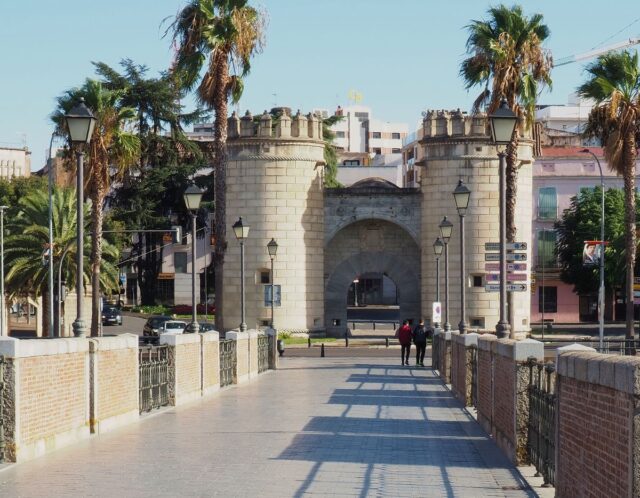
Badajoz is an antique border town on the east side of the place where Guadiana and Gevora rivers meet. The presence of Portugal on the west side of the river may explain the impression a visitor gets when she sees Badajoz for the first time: what a beautiful fortress the city is. Long protective walls, fortresses and castles have been built on hills where the old town center stands. Unlike many medieval walled settlements that impress with their heavy construction style, Badajoz impresses with defense structures that fit to the natural landscape.
Signs of people living in the location have been discovered from prehistoric times, but it was in the 9th century when the settlement developed into a key town of the region. Muslim rulers built the walls and many key buildings of the old town. In the 13th century, community expanded outside its protective walls.
With about 150,000 inhabitants, Badajoz is the largest town in the Extremadura region. Badajoz town hall provides information for visitors at its tourism pages (in Spanish only). Travelers who drive to Badajoz should park outside the old town center. Campervan travelers can find a small but popular parking lot with fresh water and waste dumping facilities by the beautiful Puente de Palmas bridge, on the other side of the river as the town center. Drive along the N523 towards east, and try to spot a small sign that indicates the right turn to the campervan parking.
Trujillo
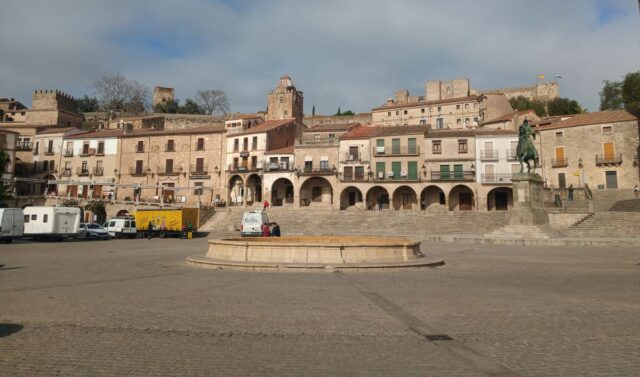
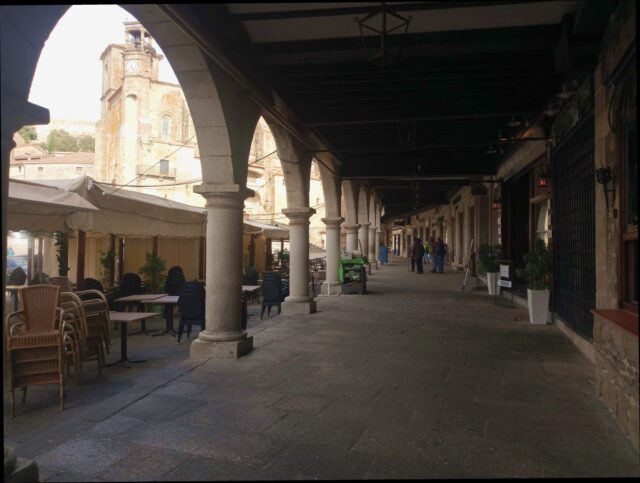

Trujillo is a pleasant and pretty small town that is easy to navigate and explore even for first time visitors. The ancient center stands on a hill that is filled with churches, palaces, houses, and restaurants along narrow alleys. The varying altitude provides nice views if you keep your eyes open. The central square (Plaza Mayor) is a good place to start and end an excursion in the historic district of Trujillo. The castle (Castillo) is at the top of the hill, and as you ascend towards the castle, you will find remnants of ancient protective walls.
The Muslim era was important for the development of the town. They built defensive structures, and many buildings that still exist in the historic center. In 13th century, Christians continued development of the town. The central square, Plaza Mayor, was established outside the walls as a marketplace that was renowned in a large region. Many palaces were built during the 16th century thanks to the treasures imported from America by people like Francisco Pizarro whose statue stands at Plaza Mayor.
The number of inhabitants in Trujillo has gradually been falling – in 2021 it dropped under 9000. During my last visit in Trujillo I joined a guided tour (in Spanish), and learned that practically every building in the town center has an interesting history. Tourist Office’s Web page has more details for guided tours and other information. Travelers who arrive in Trujillo by compact car may find a place to park in an underground complex at Avenida de Ramon y Cajal and Calle de los Pardos. Larger vehicles can be parked, for instance, at a gravel field in front of Guardia Civil police station at Calle Gracian de Sesse and Calle Cuartel.
Caceres
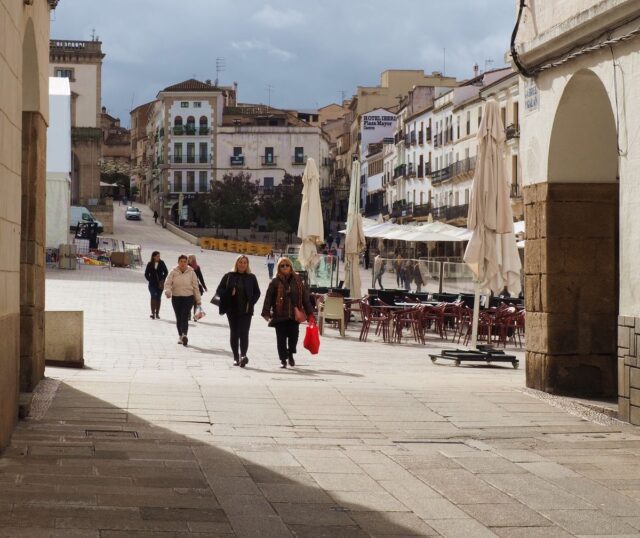
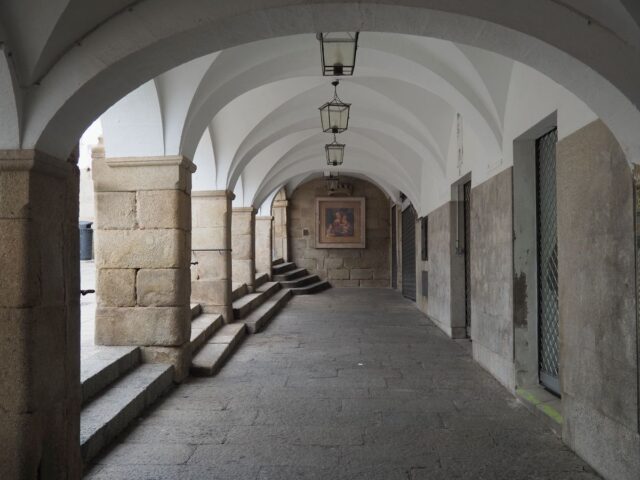
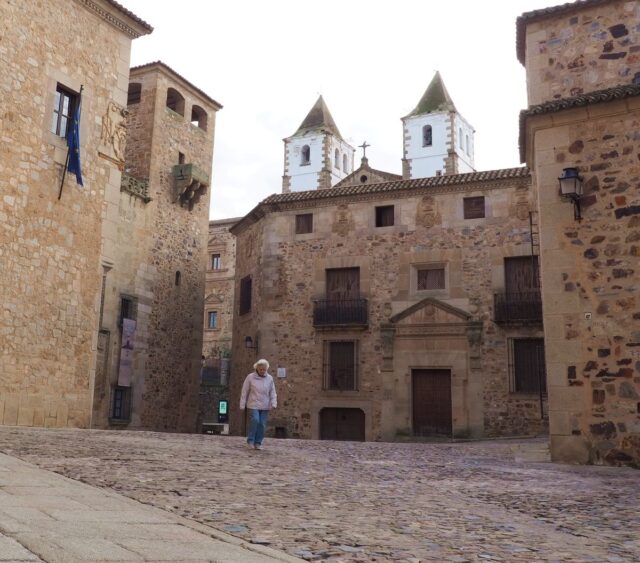
The key attraction of Caceres is its large historical town center that has endured many battles on its streets and has stood well the test of time. The entire old town center is a Unesco World Heritage destination. It is easy to spend hours simply walking around in the center, resting for a while in a cafe or bar, peeking in through massive church doors, admiring the stone walls, and finding the perfect spot for selfies. The town center feels authentic, perhaps because there are only a few tourist shops. Life goes on in the Spanish town as it has for hundreds of years.
Romans had a small settlement where Caceres stands today, but to a certain extent Caceres got its current layout and many buildings in the 12th century when Muslims ruled the region. In the 13th century building continued, and the town welcomed rich families from other regions who built their palaces in the town center. Today, Caceres has 90,000 inhabitants. It is the capital of the Extremadura province. Everyone who arrives in Caceres by car should leave it outside the center. Campervan and motorhome drivers may find a vacant spot at a popular but small 24 hour parking lot at the end of an unnamed street that branches off Calle Lope de Vega. More information at Caceres home page.
Merida
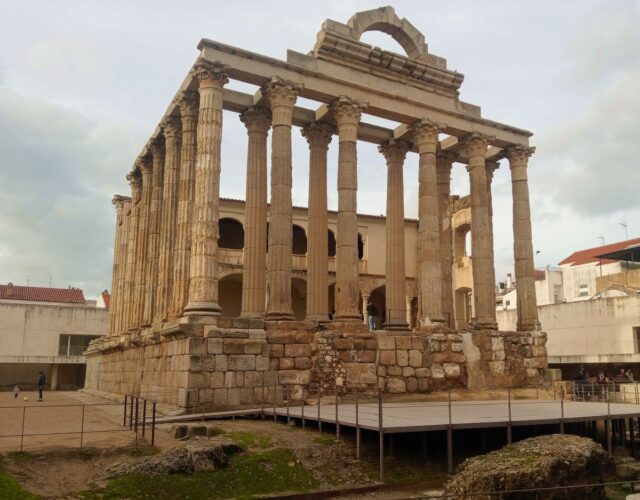
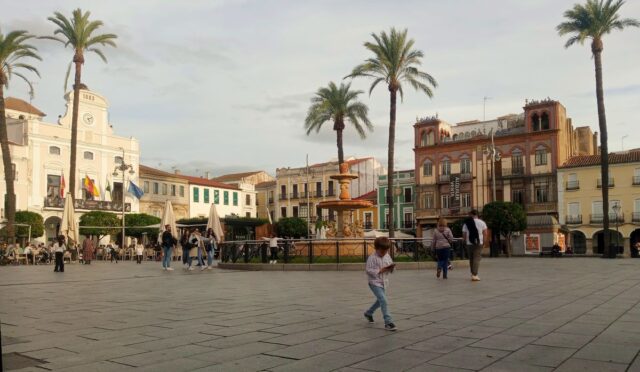
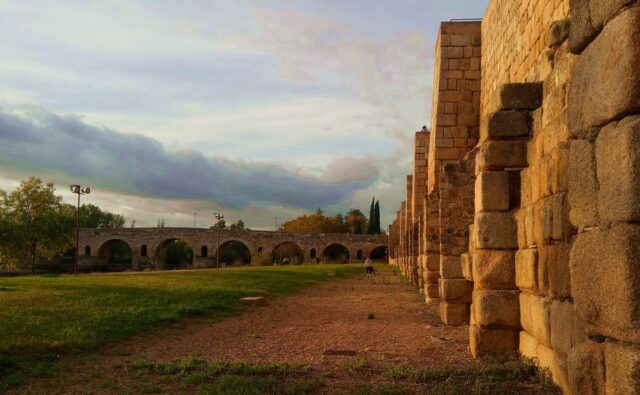
Merida has a historical feature that makes it a destination worth exploring: the Roman period, and its architecture that still makes a strong impression to visitors. The town was founded in 25 B.C by Romans. It was designed as a walled settlement where the Roman amphitheater, temple, forum, stadium, and residents’ houses could be protected. Only bits and pieces of the wall have survived, but a temple (Templo de Diana) in the heart of the old town, remnants of a castle (Alcazaba de Merida) by the river, Roman Bridge (Puente Romano) over the river, amphitheater (Anfiteatro Romano), theater (Teatro Romano), and plenty of objects in multiple museums across the town are fascinating to see. All these key sights are within a walking distance from one another in the town center.
The population of Merida is about 60,000. In 1993, the archeological treasures of Merida were listed in the Unesco World Heritage catalog. If you arrive in Merida driving a compact car, there are parking complexes in the town center. A parking lot for larger vehicles can be found 200 meters north of the Amphitheater at Calle Cabo Verde and Avenida de Extremadura. The town introduces itself to tourists at this web page.
How to travel to the region of four fabulous Spanish towns?
The nearest big transportation hubs are Madrid, Sevilla, and Lisbon (Portugal). The distance from each city to the Extremadura province is about the same – it takes a few hours to reach any of the four towns by car, train or bus.
When to visit?
Since the towns are located in the central region of the Iberian Peninsula, it means that summers are hot and winters can be chilly. Autumn and spring are the best times to travel in the region. I have not visited the towns during summer, and I’m not going to. The heat is difficult to escape, but winter days can be fine, although nights tend to be chilly. The last time I traveled there was in November, and the weather was perfect.

